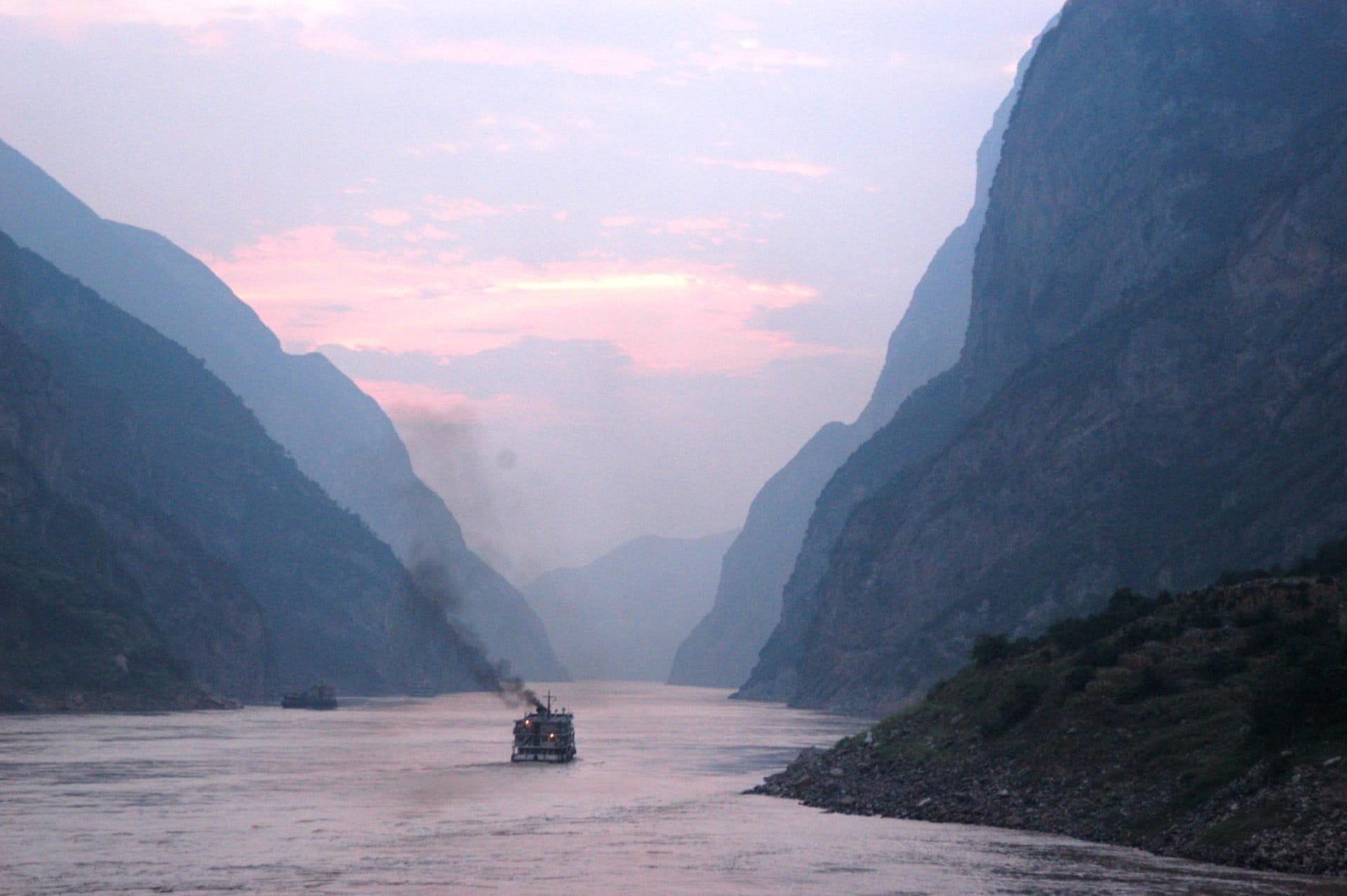Guide to China’s Rivers: Discover the Lifelines of China
China’s rivers aren’t just bodies of water; they’re the lifelines of its culture, history, and economy. From the iconic Yangtze to the mysterious Li River, these waterways offer travelers incredible views, rich history, and a chance to experience local life. This guide takes you through the most famous rivers in China, what to expect when visiting, and how each river adds to the beauty and diversity of China.
Table of Contents
Introduction to China’s Major Rivers
China is home to over 1,500 rivers, including some of the longest and most historically significant in the world. These rivers are crucial for irrigation, transportation, and energy production, and they’ve also inspired countless stories, legends, and cultural traditions. The three most famous rivers are the Yangtze, Yellow River, and Pearl River, but there are many others worth exploring.
1. The Yangtze River (Chang Jiang) – China’s Longest River
Overview of the Yangtze
The Yangtze River (Chang Jiang), stretching over 6,300 kilometers, is Asia’s longest river and the third-longest in the world. Originating from the Tibetan Plateau, the Yangtze flows eastward across China and empties into the East China Sea near Shanghai. This river is vital for transportation, agriculture, and energy, with the Three Gorges Dam generating power for millions.
Key Destinations Along the Yangtze
- Chongqing: The starting point for many Yangtze River cruises. Known for its spicy cuisine and mountainous landscape.
- Three Gorges: Famous for its breathtaking scenery and historical relics. A must-visit for any Yangtze cruise.
- Yichang: The site of the impressive Three Gorges Dam, the world’s largest hydroelectric project.

Activities and Tips for Visiting the Yangtze
- Yangtze River Cruises: Cruise options range from short sightseeing tours to week-long luxury experiences.
- Hiking in the Three Gorges: Adventurous travelers can explore the gorges on foot, where the steep cliffs offer stunning views.
- Best Time to Visit: April to October, when the weather is pleasant, and the river’s scenery is lush.

2. The Yellow River (Huang He) – The Cradle of Chinese Civilization
Overview of the Yellow River
The Yellow River, or Huang He, is China’s second-longest river, flowing 5,464 kilometers across northern China. Known as the “Mother River of China,” it played a central role in the development of Chinese civilization. However, due to frequent flooding, it’s also known as China’s “Sorrow.”
Key Destinations Along the Yellow River
- Zhengzhou: An ancient city with historical relics and museums dedicated to Yellow River culture.
- Luoyang: Famous for the Longmen Grottoes, ancient Buddhist statues carved into the cliffs.
- Lanzhou: A gateway to northwest China, with scenic spots like the Yellow River Iron Bridge and Baita Mountain.
Activities and Tips for Visiting the Yellow River
- Longmen Grottoes: An awe-inspiring UNESCO site with thousands of Buddha statues.
- Yellow River Scenic Areas: In cities like Lanzhou, you can stroll along river parks and take boat rides.
- Best Time to Visit: May to September, when the river flows strongly, enhancing the natural beauty.

3. The Pearl River (Zhujiang) – China’s Economic Powerhouse
Overview of the Pearl River
The Pearl River is the lifeblood of southern China, running through Guangdong Province before reaching the South China Sea. Its delta region, known as the Pearl River Delta, is a major economic hub and includes cities like Guangzhou, Shenzhen, and Hong Kong. This river has supported trade and development for centuries and continues to be vital for commerce and tourism.
Key Destinations Along the Pearl River
- Guangzhou: Known for its modern skyline and the Canton Tower, which offers panoramic views of the river.
- Hong Kong: Although not directly on the Pearl River, it’s part of the delta and offers numerous water-based activities.
- Macau: The Pearl River’s estuary hosts the famous casinos and historic Portuguese buildings in this cultural melting pot.

Activities and Tips for Visiting the Pearl River
- Night River Cruises in Guangzhou: The illuminated skyline is breathtaking, especially with the colorful Canton Tower.
- Explore Shamian Island: In Guangzhou, Shamian Island’s colonial architecture offers a glimpse into the past.
- Best Time to Visit: October to December, when the climate is cooler and less humid.

4. The Li River (Lijiang) – A Scenic Gem in Guilin
Overview of the Li River
The Li River winds through some of China’s most iconic landscapes, known for its karst mountains, bamboo forests, and serene waters. Stretching about 437 kilometers, the river is famous for the stunning Guilin-Yangshuo stretch, which has inspired Chinese poets and artists for centuries.
Key Destinations Along the Li River
- Guilin: Known for its dreamy landscape, Guilin is the starting point for Li River cruises.
- Yangshuo: A scenic town that offers outdoor adventures like biking, rock climbing, and caving.
- Xingping: This small village provides picture-perfect views that are depicted on the back of China’s 20-yuan note.

Activities and Tips for Visiting the Li River
- Li River Cruises: Cruises from Guilin to Yangshuo offer postcard-worthy views of limestone peaks and villages.
- Bamboo Rafting: A more intimate experience, bamboo rafts let you take in the scenery at a slower pace.
- Best Time to Visit: September to November, when skies are clear, and the water level is ideal.

5. The Mekong River (Lancang Jiang) – China’s Wild Frontier
Overview of the Mekong River
The Mekong River, known as Lancang Jiang in China, flows from the Tibetan Plateau through Yunnan Province before continuing into Southeast Asia. It is one of Asia’s major rivers, providing water, food, and transport for millions. In Yunnan, the river runs through remote and beautiful areas with ethnic diversity.
Key Destinations Along the Mekong
- Xishuangbanna: Known for its tropical climate, rainforests, and rich Dai culture.
- Jinghong: A gateway to Southeast Asia with a laid-back atmosphere and a blend of Chinese and Thai influences.
- Daluo: Near the border with Myanmar, Daluo offers an off-the-beaten-path experience.

Activities and Tips for Visiting the Mekong River
- Explore Dai Culture: Visit Dai villages in Xishuangbanna for an insight into this ethnic group’s traditions.
- Tropical Forests and Wildlife: The region is home to elephants and rare plants, making it a paradise for nature lovers.
- Best Time to Visit: November to February, when temperatures are mild and pleasant.

6. The Songhua River – Northeast China’s Lifeline
Overview of the Songhua River
The Songhua River flows through Heilongjiang and Jilin provinces, playing a key role in Northeast China’s agriculture and industry. The river is also famous for the Harbin International Ice and Snow Festival, held every winter.
Key Destinations Along the Songhua River
- Harbin: Known as the “Ice City,” Harbin’s winter festival attracts visitors from around the world.
- Jilin City: Famous for its frost-covered trees, known as rime ice, which occurs along the Songhua River in winter.
- Qiqihar: Known for the Zhalong Nature Reserve, a habitat for rare red-crowned cranes.

Activities and Tips for Visiting the Songhua River
- Harbin Ice Festival: The largest ice and snow festival in the world, with intricate ice sculptures and light displays.
- Birdwatching in Zhalong Nature Reserve: See endangered cranes in their natural habitat.
- Best Time to Visit: January for the Ice Festival, and October for autumn foliage.

River Travel Tips in China
Plan for Seasonal Variations
River conditions vary greatly with the seasons. Summer monsoons raise water levels, enhancing the beauty of some rivers, but also make others less accessible. Winter brings unique attractions like Harbin’s Ice Festival but limits travel options in northern rivers.
Book Cruises in Advance
For popular river cruises, especially on the Yangtze and Li rivers, booking in advance is essential. Peak season (spring and autumn) fills up quickly.
Prepare for Varying Climates
Rivers in China span different climates, from the tropical zones of the Mekong to the cold regions around the Songhua. Check the seasonal weather for the river area you’re visiting and pack accordingly.

Conclusion
China’s rivers are much more than natural landmarks; they’re living connections to the country’s history, culture, and daily life. Whether you’re cruising down the Yangtze, marveling at the Li River’s landscapes, or exploring the culture along the Mekong, each river offers a distinct experience. Understanding the unique features of each river, the best times to visit, and what to expect can enhance your journey and bring you closer to the heart of China’s natural and cultural beauty.








